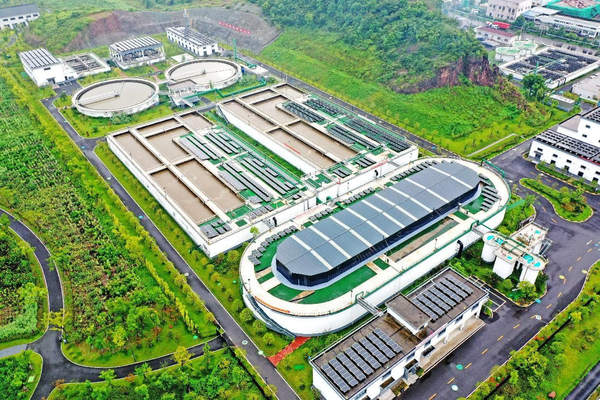By Han Xin, People's Daily
How much water is used for industrial purposes in China, the world's largest industrial country?
In 2021, China's industrial water consumption stood at 104.96 billion cubic meters, which accounted for 17.7 percent of the country's total water consumption.
China's water-use efficiency in steel and petrochemical industries has reached the international advanced level though the per capita water resource share in the country is only a quarter of the global average. However, that in some other industries is still seeing room for improvement due to certain reasons such as the backwardness in key technologies and equipment.
With the rapid development of industry, the varieties of industrial products are more diverse and the components of industrial wastewater becoming more complex. Apart from nitrogen, phosphorus and suspended matter, more poisonous and hazardous substances that are difficult to handle have been found in industrial wastewater, such as heavy metal and oil contamination.

Achieving efficient and cyclic utilization of industrial wastewater is key to promoting green development and balancing the supply and demand of water consumption.
After years of efforts, China has made positive progress in the cyclic utilization of industrial wastewater and has seen remarkable results in industrial water conservation.
The discharge of industrial wastewater in the country dropped to 1.34 million tons in 2019 from 2.37 million tons in 2010, a reduction of around 44 percent.
Among industrial enterprises above designated size, or those with annual main business revenue of 20 million yuan (about $2.95 million) or more, the recycling rate of industrial water went up from 89 percent in 2015 to 92.9 percent in 2021, and water consumption per 10,000 yuan of industrial added value in 2020 dropped 39.6 percent compared with 2015.
The recycling rate of industrial water of enterprises above designated size in steel and petrochemical industries stands at 97 percent and 95.2 percent, respectively.

Between 2016 and 2020, key medium- and large-sized iron and steel manufacturers in China reduced wastewater discharge by about 300 million cubic meters and saved 2.1 billion cubic meters of water consumption.
Internal recycling and treatment is the major way of cyclic utilization of industrial wastewater. To tackle the difficulties in the whole process of cyclic utilization, collaborative research in innovations of relevant technologies and equipment are proved to be effective solutions.
An enterprise in Zibo, east China's Shandong province has launched cooperation with a university to develop technologies that recycle and treat wastewater generated by water jet looms. The enterprise has not only optimized the recycling and treatment of industrial and domestic sewage, but also succeeded in biochemically degrading the sewage, which helps tackle pollution in a targeted manner.
As a result, the recycling rate of industrial water of the enterprise was improved by 6 percent, which saves an annual water cost of 2 million yuan.
Many enterprises are actively exploiting big data, cloud computing and other new-generation information technologies to improve digital management and internet-based collaboration in wastewater recycling and treatment.
In Luzhou, southwest China's Sichuan province, a chemical enterprise, by installing a monitoring system that covers production links including the reuse of reclaimed water, sewage treatment and circulating water, has basically realized automatic program control.
A big screen in a control room shows whether the industrial wastewater is discharged up to the standard and whether production equipment is running safely. The system can alert users to potential equipment dangers in time, and monitor the cyclic utilization of industrial wastewater in real-time.

In north China's Tianjin municipality, a steel mill has replaced regular water sources with treated local municipal sewage and reclaimed water from sewage treatment works in nearby towns. The steel mill now achieves zero discharge of wastewater and zero exploitation of groundwater.
Some industrial parks in Beijing have also accelerated their steps of sewage utilization, providing high-quality treated water for production.
"In 2020, the utilization rate of reclaimed water in all Chinese cities stood at around 24 percent. The utilization of urban wastewater treatment is unsatisfactory, which could be further expanded for industrial use," said Yang Benxiao, senior engineer with the China Electronic Product Reliability and Environmental Testing Research Institute, also known as the Fifth Electronic Research Institute of the Ministry of Industry and Information Technology (MIIT).
Yang believes that increasing the use of urban reclaimed water will remain a key direction for industrial enterprises and parks in cyclic utilization of wastewater.
A plan on cyclic utilization of industrial wastewater jointly released by the MIIT and other departments at the end of 2021 noted that by 2025, the utilization rate of industrial water of enterprises above designated size should reach 94 percent, and their water consumption per 10,000 yuan of industrial added value should decrease 16 percent compared to 2020, which is expected to build a new paradigm of efficient cyclic utilization in major water-consuming industries.


